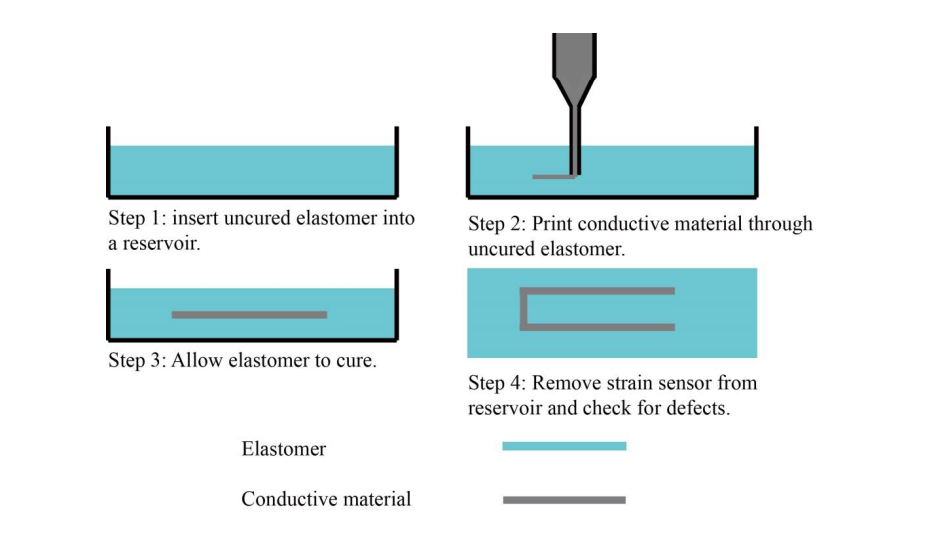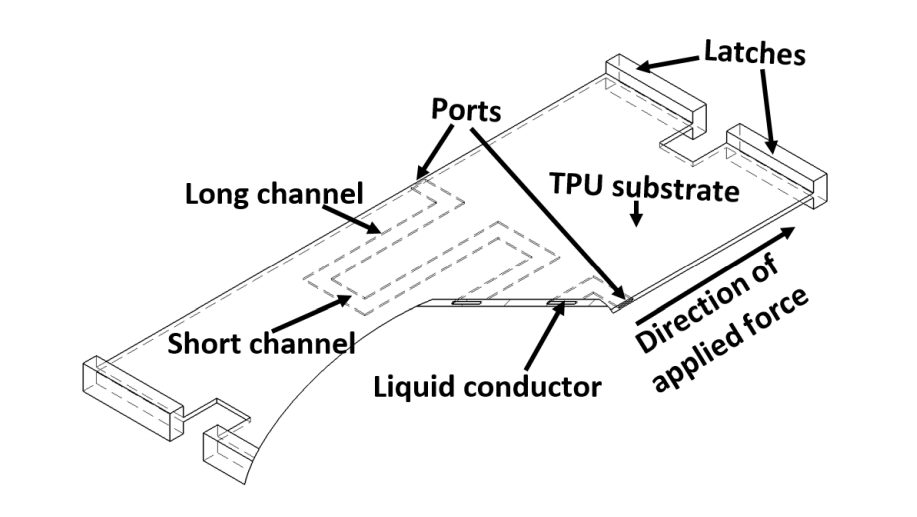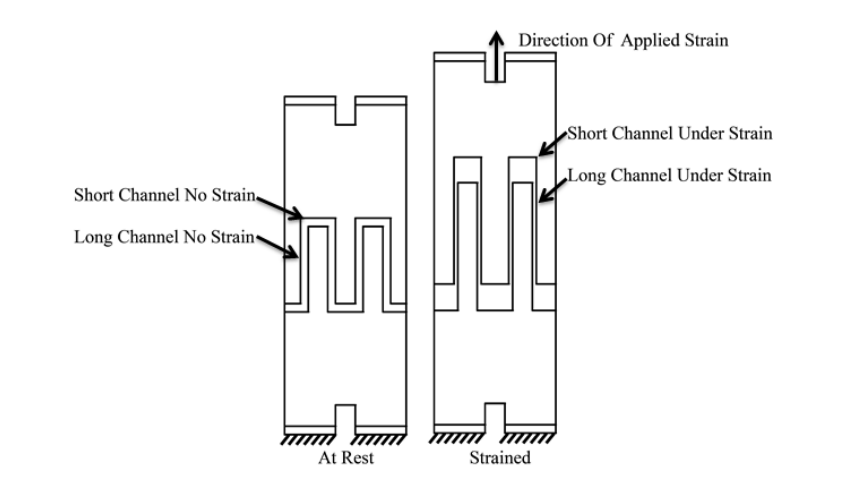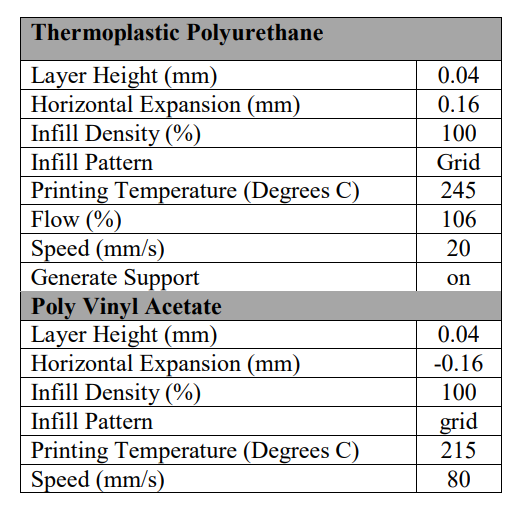Louisiana State University thesis student, Austin Smith, hits the mark in exploring mechanisms for sensors in wearable electronics. In ‘Design and Fabrication of FDM 3D Printed Strain Sensors,’ the author explains that there is much more demand today for affordable sensors that can be created quickly due to the availability of flexible electronics requiring monitoring of movement.
 Most strain sensor research has been focused on sensitivity, elasticity, and actual fabrication. Here, Smith sought to develop a way to integrate more than one sensor into a single device, using materials and techniques offering the capability for strength and performance. Samples of two different sizes: Type I at 2000 μm by 200 μm and Type II at 500 μm by 200 μm, allowed Smith a better chance to examine and evaluate the prototypes.
Most strain sensor research has been focused on sensitivity, elasticity, and actual fabrication. Here, Smith sought to develop a way to integrate more than one sensor into a single device, using materials and techniques offering the capability for strength and performance. Samples of two different sizes: Type I at 2000 μm by 200 μm and Type II at 500 μm by 200 μm, allowed Smith a better chance to examine and evaluate the prototypes.
Once created, each sensor consisted of:
- Embedded channels (both long and short)
- Conducting fluid
- Substrate
“When an external force was applied, the channels deformed, and the cross-sectional area of the long channels reduced while the cross-sectional area of the short channels increased. As a result, the deformation of the long channels caused a reduction in the cross-sectional area of the conducting fluid. This change in area of the conducting fluid reduced the size of the path the current could flow through and thereby, increased its resistance,” stated Smith.
Galinstan fluid was used for the research project because of conductivity and relative lack of toxicity, with Smith noting that the strain sensor pattern was suitable for single axis strain. An Ultimaker 3 3D printer was used to print the sensors, fabricated with Ninja Flex Thermoplastic Polyurethane. Overall, the research showed that a range of complex designs and sensor platforms can be created via FDM 3D printing.
“Nonetheless, issues related to strain offset, stress accumulation, and stress concentration were limiting factors. The way the FDM process formed the elastic substrates was such that the fibers were interwoven and at an angle with respect to the applied strain,” concluded the author. “This reduced the strain required to cause permanent deformation and strain accumulation in these fibers.
“These observations were highly relevant to the creation of 3D printed strain sensors as the patterning of the layers could alter the strain response of the strain sensor. Overall, FDM 3D printing has been shown to have potential as a method of simple and cost-effective fabrication of flexible strain sensors.”
As 3D printing and electronics continue to accompany one another in countless innovations today, sensors are a popular focus also for many different applications, from embedded components to biomedical sensors to fiber optics. Find out more about strain sensors in electronics like wearables here. What do you think of this 3D printing news? Let us know your thoughts! Join the discussion of this and other 3D printing topics at 3DPrintBoard.com.
[Source / Images: Design and Fabrication of FDM 3D Printed Strain Sensors]
Subscribe to Our Email Newsletter
Stay up-to-date on all the latest news from the 3D printing industry and receive information and offers from third party vendors.
You May Also Like
Air Force Awards Fortius Metals $1.25M to Qualify 3D Printing Wire for Hypersonic Applications
AFWERX, part of the US Air Force Research Laboratory (AFRL), awarded a Direct-to-Phase II Small Business Innovation Research (SBIR) contract worth $1.25 million to Colorado’s Fortius Metals, to accelerate qualification...
US Air Force Awards JuggerBot $4M for Large-format Hybrid 3D Printing
Large-format 3D printer manufacturer JuggerBot has received a $4 million grant to develop a large format 3D printer, courtesy of the Under Secretary of Defense, Research and Engineering Manufacturing Technology...
Where Have All AM’s Unicorns Gone?
In the rapidly evolving world of 3D printing, startups valued at over a billion dollars, known as unicorns, once seemed as fantastical as the mythical creatures themselves. While a few...
How My Childhood Fascination with Planes Led to Investing in 3D Printing
My fascination with aerospace started young, and I started studying planes–identifying them in the sky and learning everything I could about how they work. Fast forward to my first week...



































